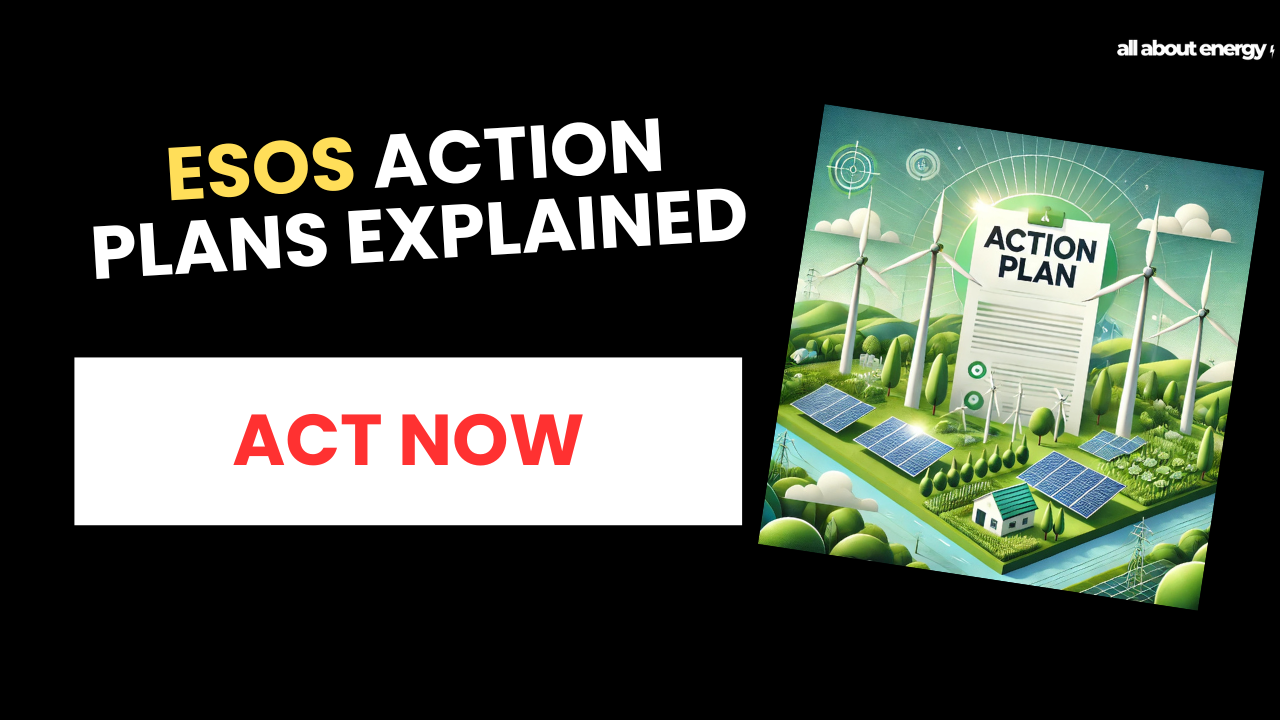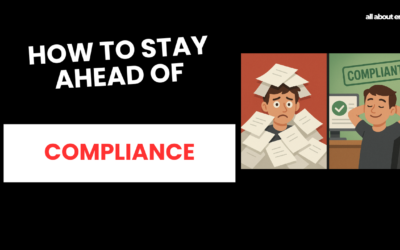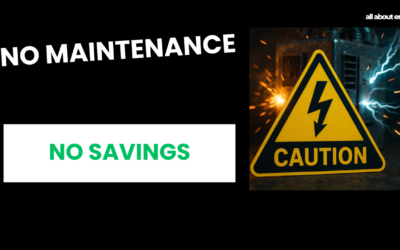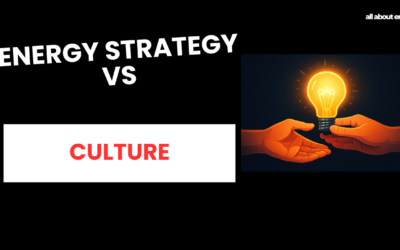What You Need to Know About ESOS Action Plans
Written by Joe Wright
If you’re a large organisation in the UK you’re likely aware of the Energy Savings Opportunity Scheme (ESOS). By now, you’ve probably navigated through the reporting requirements of the earlier phases and even the latest one, Phase 3. With ESOS Phase 3 however, there’s a new twist you can’t afford to ignore: the Action Plan and Annual Update requirements.
These updates can be more than just boxes to tick for compliance. If approached strategically, they can unlock serious opportunities to cut costs, improve efficiency, and position your organisation as a leader in sustainability. Let’s dive into what’s changed, what it means for you, and how you can make the most of these requirements—not just to comply, but to thrive.
Before we dive in the updates, let’s just do a brief recap of ESOS, especially for those who may not know that they need to comply (yes organisations like this are still out there).
What Is ESOS?
ESOS is the UK’s mandatory energy assessment program for large organisations. It’s designed to uncover energy-saving opportunities, reduce operational costs, and cut carbon emissions. If your organisation meets one of the following criteria, ESOS compliance isn’t optional:
- You employ 250 or more people.
- Your annual turnover exceeds £44 million, and your balance sheet totals more than £38 million.
In previous phases, compliance involved measuring energy consumption, conducting audits, and submitting a compliance notification. It gave you a snapshot of your energy usage, highlighted inefficiencies, and identified opportunities for savings. But after that? Many businesses would file the report and carry on as usual.
Not anymore.
What’s New in Phase 3?
Under Phase 3, you must now:
- Create an Action Plan: You’re required to outline how you intend to act on the energy-saving recommendations from your ESOS audit.
- Provide Annual Updates: This isn’t a one-and-done exercise anymore. Each year, you’ll need to report on the progress you’ve made against your Action Plan.
The goal? To push you beyond merely identifying opportunities for savings to actually implementing them. The annual updates are now mandatory to track your progress, ensuring that your plans don’t gather dust.
The new Action Plan must include:
- Your goals for reducing energy consumption.
- Timelines for when you plan to implement these measures.
- Links to recommendations from your ESOS assessment.
- Expected energy savings over the four-year compliance period.
- Methods for estimating these savings.
Why These Changes Matter to Your Business
At first glance, you might see these updates as just more paperwork. But dig a little deeper, and you’ll see they’re a powerful nudge toward making changes that will benefit your bottom line.
Energy costs are one of the most significant overheads for many businesses. The recommendations from your ESOS audit aren’t just hypothetical ideas—they’re real, actionable steps to reduce waste, cut costs, and even improve operational efficiency. Acting on them is not only good for compliance; it’s good business.
Plus, the annual updates hold you accountable. Instead of letting those recommendations collect dust, you’ll be building momentum each year toward a more energy-efficient operation.
Why Acting Now is Essential
The compliance deadline is December 5, 2024, with submissions accepted until March 2025. While that might sound like plenty of time, early action can offer significant advantages:
- Ensure Compliance Early Meeting the legal requirements ahead of schedule gives you peace of mind and avoids any last-minute panic.
- Start Saving Sooner The earlier you finalise your action plan, the sooner you can implement energy-saving measures and start reaping financial rewards.
- Secure Expert Support Waiting until the last minute could leave you scrambling for consultants for support when demand peaks. Starting now ensures you have access to the expertise you need, when you need it.
- Avoid Year-End Clashes March is a busy time for most businesses, with year-end financials and other priorities. Acting early means you’ll avoid overloading your team during this critical period.
- Mitigate Deadline Risks Delays can jeopardise your ability to submit on time, leading to potential fines and reputational damage.
Turning Compliance into Opportunity
The new Action Plan requirement isn’t just a regulatory hurdle—it’s a golden opportunity to integrate energy efficiency into your long-term business strategy. Here’s how you can maximize the benefits:
1. Align with Business Planning
As you prepare budgets for the coming years, the ESOS Action Plan can provide a roadmap for energy efficiency projects. Use the recommendations from your audits to:
- Identify cost-effective measures.
- Prioritize projects based on potential savings and ROI.
- Secure budgetary approval for phased implementations.
Planning ahead not only streamlines execution but also helps your finance team anticipate costs, making approvals easier.
2. Leverage a Revolving Green Fund
If upfront costs for energy-saving projects are a concern, consider setting up a revolving green fund. This approach reinvests savings from initial projects into future initiatives, creating a self-sustaining cycle of improvements. While this requires careful planning, it’s an effective way to maintain momentum and fund capital-intensive measures over time.
3. Build Organisational Buy-In
Engage key stakeholders early, from finance to operations teams. Highlight how energy efficiency aligns with broader business goals like cost reduction, sustainability, and net-zero commitments. A well-communicated action plan can foster support across your organisation.
Your Next Steps
If your organisation is ready to take on this challenge:
- Start Now. Whether you have internal capacity or need external expertise, early action is crucial.
- Seek Expert Guidance. If compliance feels overwhelming or you want to maximize the benefits, work with experienced consultants who can guide you through the process.
Acting now isn’t just about avoiding penalties—it’s about gaining a competitive edge. By integrating energy efficiency into your business strategy today, you’ll set yourself up for long-term success, from cost savings to enhanced sustainability.
Don’t wait for the Environment Agency to remind you. Take control, start your ESOS Action Plan, and turn compliance into opportunity. You’ll thank yourself later.
Watch the video for a quick overview of this topic:
You May Also Like…
Compliance Simplified
If you’re part of any of the mandatory compliance scheme like SECR, ESOS, or the many others out there, then you...
Why maintenance matters for energy management
When you think about improving your energy management, where does your mind go first? Upgrades? New systems? Cutting...
Creating A Culture Of Energy Efficiency
If your business is subject to compliance schemes like ESOS or SECR, you’re not alone. A lot of the companies I work...




